A well-known Guyanese educator and poet is advocating continual classroom training for teachers as a means of improving the country’s education system, since teachers are the foot soldiers of the system and if they are not good at what they do then the system will fail.
“Our teachers are not trained on the ground. I am not talking about Cyril Potter College of Education [CPCE]. I am talking about in-service, in-house training in the school,” Peter Jailall said in a recent interview with the Sunday Stabroek.
Jailall, who has over 42 years of teaching experience in Guyana, Canada and the US, said it is important for there to be an ongoing process of learning for teachers instead of them just being trained at CPCE, which entails them spending some time in the classroom and then that is the end of their training.
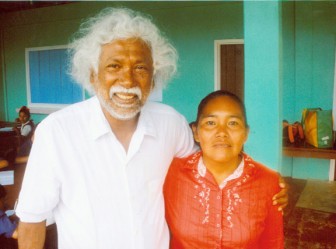
“That is not it, because education is a lifelong process and you have to train teachers to be lifelong learners themselves so that they can inculcate in children this idea of lifelong learning, because learning goes on all the time.”
He said for teachers to feel they have “arrived” after college is “nonsense” and not good enough.
“We need informed teachers, teachers who are constantly encouraged and taught how to teach and supervise so that they can do a good job or else our children are not going to learn….”
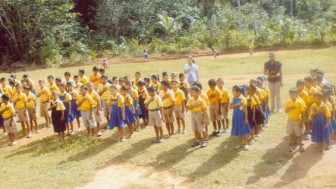
Stressing that it is not a criticism of the country’s teachers, Jailall said the teachers need support from the authorities and should be provided with books and materials so they can do the job.
An advocate for good teacher education, Jailall sees it as very important in the interior and across the country because they are the ones who mould the nation adding that he is “very passionate” about the issue.
“Because our children are our real resources, our rich resources, not only the mineral and the oil and the gold… the future of this country will depend on the children and how we educate them.”
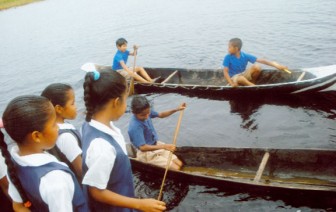
Additionally Jailall said the future of democracy in Guyana stems from a very literate educated population.
In recent times Jailall, who has been back to Guyana every year since 1985, has spent time teaching at the Wallaba, Karaburi and Kamwatta primary schools in Kato, Mahdia, Mabaruma and Moruca.
He works for the Canadian University Service Overseas (CUSO) and in collaboration with the Ministry of Education has been working in many schools around the country since 1998. But recently his focus has been on the interior, and Jailall said he is fascinated with the nature of the students in those areas coupled with the richness of the environment. It is the environment he uses to teach the children about science and also to make their writing richer.
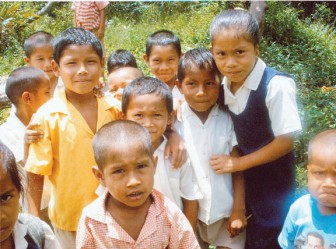
He doesn’t only teach the children, he teaches their teachers also, and has been using the Guyanese proverb, “Far a pah mek ochro dry a tree” to describe the state of education in the interior and what happens far away from the coastland and the centre of Georgetown.
“Just how ochro gets hard and dry and spoilt when they are not reaped on time because they are far away, the same way many children attending school in the hinterland can waste away if neglected and not properly taught,” he said.
The educator said local persons from the hinterland communities need to be trained to become teachers as teachers from the coastland would not want to go into those areas to teach.
“You have to train the teachers who are there – a very thorough serious education programme for the hinterland teachers… continually… They are doing some of it but we need more of that,” he said.
‘Mash up’

And the educator told the Sunday Stabroek that he has been using Guyanese Creolese to “mash up” Standard English. Describ-ing Guyanese Creolese as “sweet” Jailall said he always uses this before teaching the children Standard English.
Jailall is of the opinion that using Creolese language in the classroom is a more effective way of teaching children, especially those at the primary level. Usually, Creolese is not encouraged in schools and according to Jailall it is seen as a “bad language.
“But I showed them as an example we can use the Creole to mash up the standard and I like that term mash up… And by mashing up the language… means I dissect the language; I translate it and at the same time use it to teach Standard English effectively,” he said.
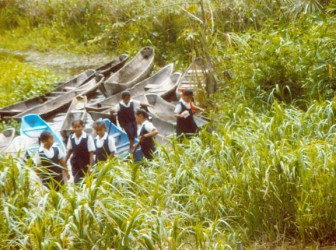
The Creole is part of the children’s “soul” the educator said, and it is difficult to keep it away from them, so instead they should taught to keep the Standard English in their “back pockets and pull it out when it is necessary…”
The very theatrical Jailall said that he is very excited about this form of teaching and he has already seen how effective it is by the difference in the manner the children responded when he first entered the school and by the time he was ready to leave. He said Guyana’s Creole has all the elements of what a language is – verb, subject agreement and rhythm – and should not be “run down” but used effectively.
“For example I will tell the children a story and they would use their own terms to describe the story,” Jailall said.
He gave the example of a story about an annoying fly, where one child wrote: “The fly in the story prappa badaration.” The educator said while some teachers would have corrected the child he re-wrote what the child wrote in large letters on the blackboard and explained to the students that it is part of the country’s language.
To motivate the children to write, Jailall said, he asked them to take him on the path they travel to school and after having a discussion with them about what they see during their journey, he started a poem and told them to continue it.
“I asked the children about the wildlife, the flora and the fauna in the area, we talked about it and we wrote about…” he said.
Jailall is also a poet and a storyteller and he brings all of this to the classroom where he describes himself as a “performance teacher” with the aim of holding the children’s interest.
“I have been coming back since 1985 because I love Guyana, it is my home and I love the children and I want to impart some of the knowledge I have in my own country,” he told the Sunday Stabroek.
He works with teachers and students and he encourages the children to write. Their written work is shared and placed in the learning centres for children to read in the afternoons.
“Children making their own texts – it is not a new idea but for here it might be a new idea – and teachers as writers… because you cannot teach writing if you don’t know to write yourself, so teachers have to learn to write themselves,” he said.
But he is impressed by some of the writing of the children and gave the example of one girl – Arita Benjamin – who was very descriptive when she wrote about two jaguars entering her yard and killing two pet dogs.
According to Jailall, his experience teaching the children in Regions 1, 7 and 8 is that they can read, write and process information and are extremely knowledgeable about their own environment. He said while the results at the national examinations from these regions may not as be as good as other regions it is because the children are not properly taught.
The “texts” made by the children will be in their own words about their interests and they are not only learning to write and read but also they learn some science. By using the children’s vocabulary to teach them Jailall said it will be more interesting and effective than textbooks talking of things the children never experienced.




